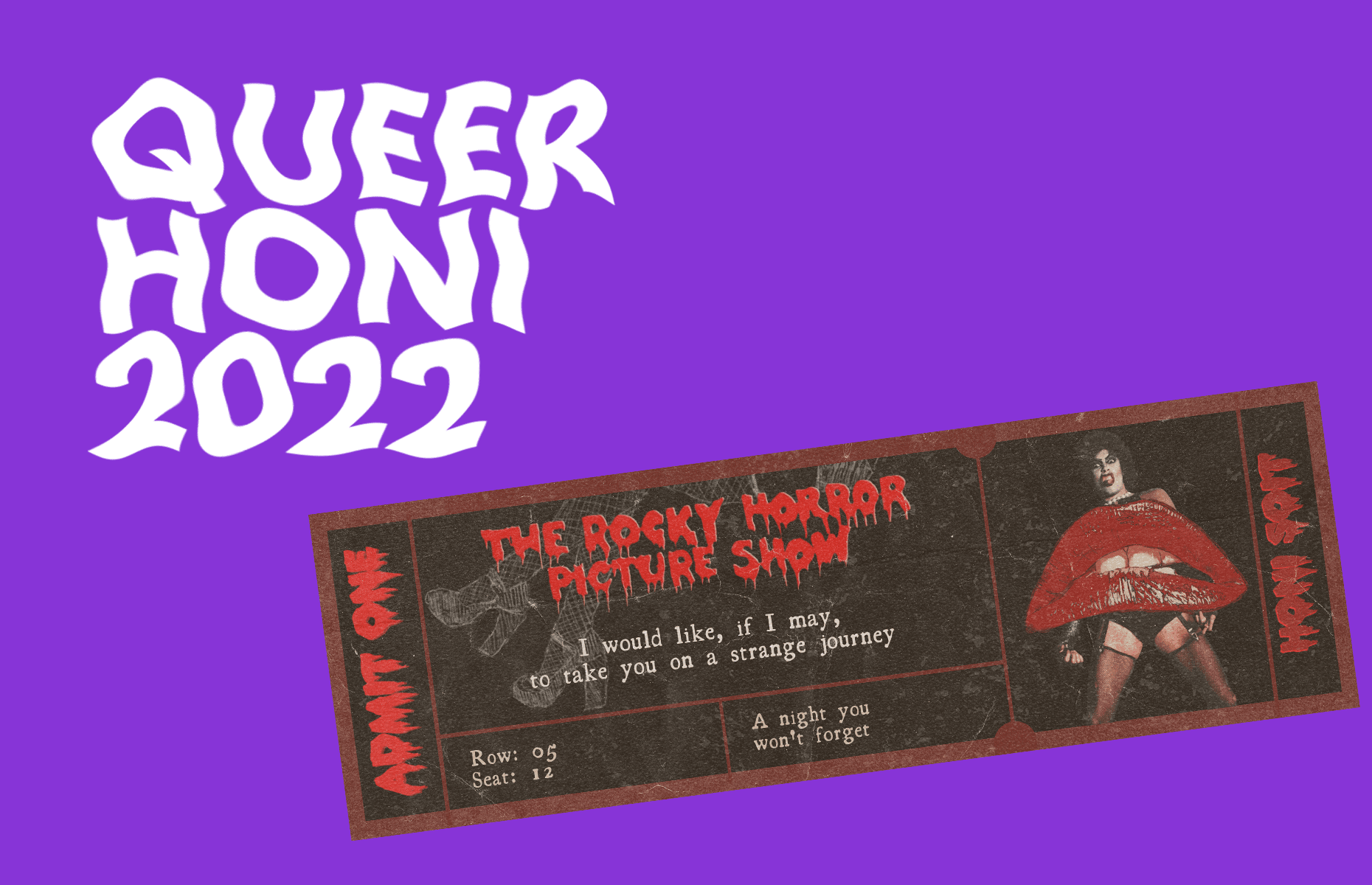The opening lines of The Rocky Horror Picture Show are shouted by audiences across the world as the famous red lips appear on screen and croon the opening number of the film Science Fiction/Double Feature. The auditory response makes up the first of many lines, calls and chants supplied by the audience; a collaborative dialogue which is ingrained in the film’s culture after decades of dress-up and call-out midnight screenings.
The Rocky Horror Picture Show is a quintessential cult film, with disciples gathering across the globe to watch the film in living rooms and dingy cinemas alike since 1975. Originally a stage show, the decision to create a film adaptation followed its success in London, Los Angeles and New York. Originally flopping at the box office, perhaps due to its nonsensical plot and absurd characters, the film was withdrawn from cinemas on account of low audience attendance. Mainstream critics hated the film, and multiple attempts to re-release the film failed. Rocky’s success was a slow burn, aided by midnight screenings that returned an element of counter-cultural performance to the production.
A spoof on horror movies, Rocky Horror mirrors the plot of Whale’s The Old Dark House, a 1932 film in which supposedly normal citizens are drawn into a mansion to avoid a thunderstorm and are swept into the antics of the house’s characters. Young, blonde, newly engaged Janet Weiss and hunk fiancé Brad Majors search for a phone, and are accosted by the “transexual transvestite” Dr. Frank ‘n’ Furter (Tim Curry) alongside his band of wayward Transylvanians. The plot is nearly incomprehensible, with Frank ‘n’ Furter creating a new member of the house in the Grecian figure of Rocky Horror, out of mysterious science (and lust). The film is frantic and full of Frank ‘n’ Furter tricking his guests into an endless number of campy hijinks.
My first experience of the movie (aside from dancing to the Time Warp at school discos) was watching the cast of Perks of Being a Wallflower perform to the movie. Concurrent screenings and performances of Rocky created a community around the movie that persists, with young people becoming indoctrinated into the cult of Rocky guided by elders.
Attending a Rocky Horror screening feels like stepping back in time. With grainy video quality and a vibrant, tangible subculture around it, the film is a relic of a smaller, pre-internet form of the queer community. All are expected to adore and abhor the film in equal measure, delighting in its absurdity and bemoaning plot holes and flaws. Whenever I see the film at Dendy’s, there is always a handful of people dressed as Frank ‘N’ Furter or other iconic characters traipsing to the front of the cinema to dance along to the music. There are, of course, many lines of so-called ‘counter-point dialogue’, in which the audience reacts to the ridiculous actions of characters on screen or the various flaws in the film itself. Heckling authority figures and bullying lead characters are common additions to the movie, provided entirely by the audience.
The movie resonates with queer audiences due to its absolute embrace of sexual freedom and celebration of rejecting heterosexual social norms. Characters come in all forms – fangirl tapdancers, Transylvanian maids, repressed women and bicurious men – never lingering on traits that were considered taboo at the time. In the 70s, once a culture developed around the film, screenings became a safe space for transgender and queer actors to express themselves, embraced by viewers for their quirks rather than in spite of them. Dr Frank ‘n’ Furter croons about being a ‘sweet transvestite’, announcing his queerness and generally harmless nature. His brazen bisexuality is clear when we see parallel scenes of him seducing both Brad and Janet, but this is never demonised, rather used to heighten the absurdity of the plot.
Fox attempted a remake in 2016 starring Laverne Cox, widely considered by critics to be an overly sanitised version of the original, trading off the more outrageous aspects for a more palatable product. Actors fell flat at portraying precisely what attracts people to the original: the slow transformation of the young couple from prim and proper to sexual and social deviants. The production lends itself to cramped cinemas, crappy sets, unfinished costumes, and an audience of people passionate about the absurdity such a film brings.Today, the queer community continues to embrace Rocky Horror and its bold embrace of queer expression. With screenings occurring twice monthly in Sydney, Rocky Horror is ushering in a new generation of performers and participants. Living room screenings can’t compare to the sheer energy of a live viewing – with people shouting their favourite comebacks and quips, the audience truly becomes part of the experience.





